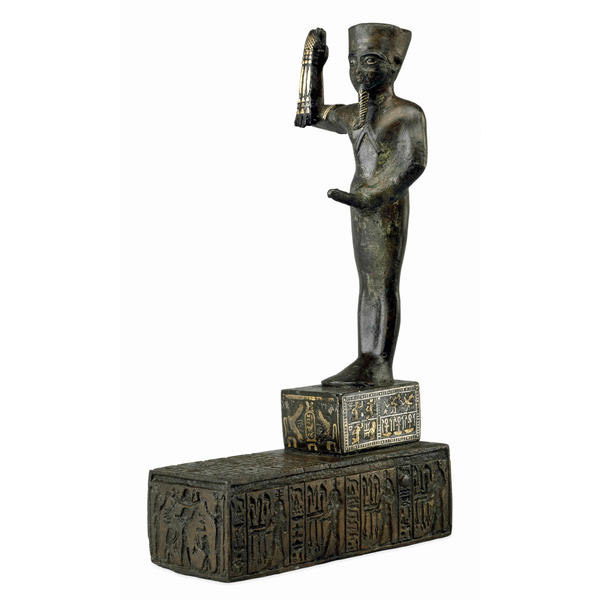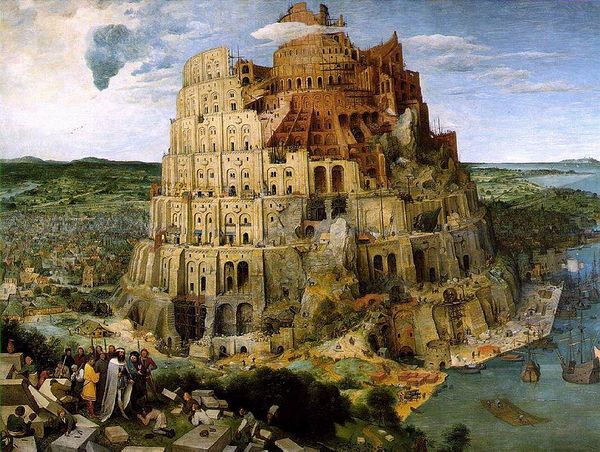Painting in the Ancient World
Egypt
Many centuries before the dawn of the Christian era, Egyptians lavishly decorated their tombs and temples with paintings, but the Egyptians artist never produced anything nearing perfection in his work. This unfortunate condition was largely due to the fact that he was controlled by certain rules and regulations that positively prohibited any departure from the established conventions.
But Egyptian paintings, while not beautiful according to our standards today, are nevertheless priceless because of their historic value, for they tell the story of the public, religious and domestic life of the ancient Egyptians in that far off age many centuries before the birth of Christ, and it is interesting to know just how those paintings originated.
The Egyptians, being one of the earliest nations of antiquity, did not possess an alphabet, and so they conceived the idea of recording the stories of their land and time in picture form on the walls and ceilings of their tombs and temples, thus handing down to posterity a priceless legacy.

bronze figure of the Egyptian god Amunre-Kamutef
elaborate scenes can be seen on the base and pedestal
These picture writings were called hieroglyphics, but unfortunately the ability of men to read them died out with the decline of Egypt, about four centuries before the christian era. And then for a period of more than thousand years, the only knowledge the world had of ancient Egyptian History was derived from the records of Greek historians. Students from all over the civilized globe labored in vain trying to decipher the writings of these ancient people, but the hieroglyphics defied all their efforts, and early Egyptian history remained shrouded in mystery.
Then after all attempts at deciphering the writings proved fruitless, a soldier in Napoleon's army, digging at the Rosetta mouth of the Nile River, unearthed a tablet of stone bearing an inscription in three different characters; one in Greek, one in demotic, and the third in hieroglyphics. Scholars read the Greek writing without difficulty, but the remaining inscriptions defied all attempts at deciphering just as the Egyptian writings had done for centuries. But this time the scholars refused to acknowledge defeat, as they felt the three inscriptions were the same.
At length, after careful and conscientious study and the comparison of notes, all the inscriptions were translated, and just as had been anticipated, were found to convey the same meaning. A key to the picture writings was thus obtained, and today students and scholars find little if any difficulty in deciphering the hieroglyphics on the walls of Egyptian tombs and temples.
So you see children, the hidden history of one of the oldest nations in the world was brought to light through the unearthing of a stone slab.

The Rosetta Stone
And now for a brief resume of Egyptian Art; The Egyptians built palaces and temples of enormous size, and today visitors marvel and wonder as they gaze at those monuments that attest the skill of the builders who lived in Ancient Egypt.
The pyramids, which are also the work of the Egyptians, were listed by the Greeks among the seven wonders of the world. But although Egyptian Art has endured throughout the ages in the form of colossal architecture, sculpture and picture painting, and displays a certain amount of artistic ability, it lacks the beauty we look for in the fine arts.

The Pyramids
The work of the Egyptian artist has never advanced, as I told you before, beyond a certain limit, as his ability to express himself in art was curbed and shackled by certain unbreakable religious rules.
And now, my dear children, we must leave Egypt, and see what we can learn about the development of art in the ancient Kingdoms of Babylonia and Assyria."
Babylonia and Assyria
In Sacred History we learn that the early Babylonians planned to build a tower that would reach to Heaven, but God frustrated their design by confounding their language so that they could not understand one another." Their bent for architecture was also expressed in temples, palaces and buildings called Ziggurats.

Tower of Babel, 1563
Pieter Brueghel the Elder (1526-1569)
Their interiors of their buildings were brightened by artists who embellished the inner walls with mural decorations studded with gleaming gold, silver and precious stones. The walls of their temples and palaces were also decorated with enameled bricks and tiles. This form of painting. we are told, produced a very beautiful effect.
Like Egypt, Babylonia had a form of picture writing, but the inscriptions were recorded in what is known as cuneiform characters and legends stamped in these peculiar wedge shaped letters are found on bricks buried in the ruins of their temples and palaces today.
Their ideas in painting and decoration did not advance, nor did those of the Assyrians although they developed great skill in other arts, and now we will spend a few minutes with another ancient people, the Phoenicians.
The Phoenicians
The Phoenicians were a commercial people who absorbed some ideas in art from the east and passed them on to their neighbors in the west, but they did not make any progress in the art of painting.
However, we are deeply indebted to the Phoenicians for a priceless legacy. I refer to the alphabet which was handed down to us by the ancient people of that kingdom.
Now so far, my dear children, we have reviewed briefly the artistic efforts of the people of Egypt, Babylonia, Assyria and Phoenicia, and we find that the ancient inhabitants of these kingdoms never advanced beyond prescribed limits. In fact when they reached a certain degree of perfection in painting and architecture, they seemed to be unable to carry on to greater heights and their work in art remained stationary.
In Egypt the artists were fettered by laws that governed their work, while the Babylonians and Assyrians seemed to be a conquering race, who devoted the best that was in them to conquest. The Phoenicians were a commercial and colonizing people, who, although they spread ideas on art and education among the colonies with which they traded, found no time to remain at home and devote to the development of the arts in their own land, especially that of painting.
Having learned that little progress was made in painting in the ancient kingdom we have just visited, we proceed to Greece, one of the European nations of the ancient world.
| Page 2 | Beginning of Book | Page 4 |